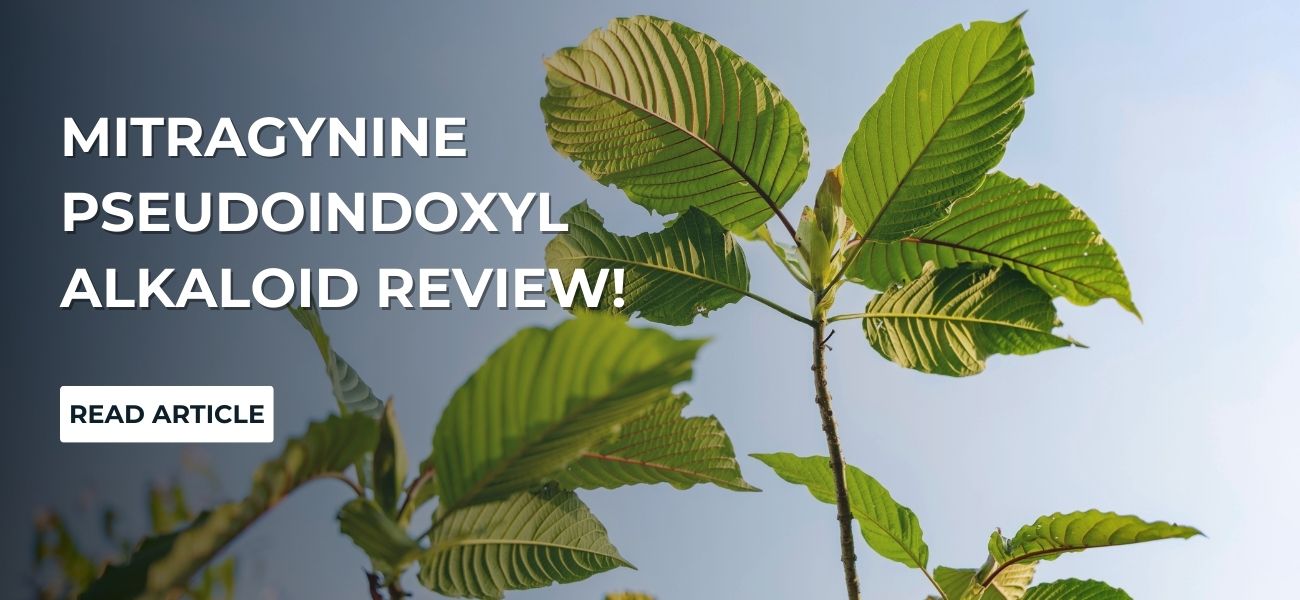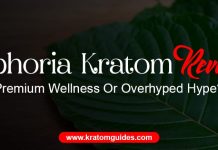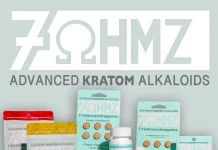Mitragynine Pseudoindoxyl is a unique compound derived from the kratom plant that is becoming popular among kratom enthusiasts for its amazing analgesic properties. The alkaloid is a major part of Kratom’s alkaloid profile and is becoming one of the innovative discomfort management solutions. Its unique pharmacological profile sets it apart from traditional analgesics and has potentially reduced side effects. Researchers are exploring its therapeutic potential and in this review, we will dig deeper into the synthesis of this alkaloid, its structural analysis, pharmacological characteristics, biological activity, metabolism in human plasma, and what can be the implications for drug development companies.
Chemical Synthesis of Mitragynine Pseudoindoxyl Alkaloid of Kratom
Mitragynine Pseudoindoxyl is gaining attention as a promising discomfort management alternative with fewer side effects. In recent research, researchers achieved the first enantioselective and scalable total synthesis of this compound and its C-20 epimer which is speciogynine pseudoindoxyl. The alkaloids’ unique spiro-5-5-6 tricyclic structure was formed through a protecting group-free cascade relay process by employing oxidized tryptamine and secologanin analogs.
The researchers discovered that Mitragynine Pseudoindoxyl doesn’t act as a single entity but as a dynamic ensemble of stereoisomers in protic environments. It shows the alkaloid’s structural adaptability in biological systems. The findings of the study lay the groundwork for designing Mitragynine Pseudoindoxyl analogs and clearly show its synthetic, structural, and biological aspects.
Pharmacological Characteristics of Mitragynine Pseudoindoxyl
Scientists studied Mitragynine Pseudoindoxyl to see how it affects the body’s opioid receptors. In lab tests with guinea pig and mouse tissues, they found that the compound can reduce contractions in a dose-dependent manner.
Mitragynine Pseudoindoxyl showed strong effects on μ-opioid receptors, similar to the powerful DAMGO. It connected well with DAMGO at μ-opioid receptors and naltrindole at δ-opioid receptors but didn’t really connect with κ-opioid receptors. The research also pointed out that Mitragynine Pseudoindoxyl has effects opposite to some actions that make it different from Mitragynine . Altogether, these results suggest that Mitragynine Pseudoindoxyl specifically influences μ-receptors in the ileum and δ-receptors in the vas deferens and is a potential controller of opioid receptors.
Opioid Receptor Effects of Kratom Compounds
Curious to know the opioid receptor effects of Kratom alkaloids? We have got our hands on the study that explored how Mitragynine (MG), the main component in kratom, and its byproducts, 7-Hydroxy-Mitragynine (7-OH-MG) and Mitragynine Pseudoindoxyl (MG-P), affect opioid receptors. The research confirms that MG transforms into 7-OH-MG, which further converts into MG-P. In tests, MG-P displayed the highest affinity at mu-opioid receptors (MOR) which indicates potential discomfort-relief properties.
However, animal studies revealed 7-OH-MG as more effective in relieving discomfort than MG-P. MG-P, though potent in mimicking morphine effects, showed minimal discomfort relief, and this suggests its limited role in kratom’s analgesic effects. Overall, the findings showed us how these compounds contribute to kratom’s pharmacological effects.
Another research enhances our understanding of the synthesis, structural dynamics, and biological activity of Mitragynine Pseudoindoxyl. It provides a foundation for future studies and modifications for the development of novel analgesics.
Metabolism of 7-OH-MG in Human Plasma and Production of MG-P
The research discusses the metabolism of 7-Hydroxy-Mitragynine in human plasma which is a metabolite of Mitragynine found in kratom plants. The study found that in human plasma, 7-HMG is converted to a novel metabolite called Mitragynine Pseudoindoxyl which is even more potent and efficacious as an opioid than both Mitragynine and 7-HMG.
The research findings highlight the stability of 7-HydroxyMitragynine (7-HMG) in different animals’ plasma. According to the results, it is most stable in mice, rats, and monkeys, and least stable in humans. Interestingly, in human plasma, 7-HMG transforms into Mitragynine Pseudoindoxyl more significantly compared to other animals tested. The conversion appears to be enzyme-driven but the specific enzymes remain unidentified. Mitragynine Pseudoindoxyl was discovered to be more potent than both Mitragynine and 7-HMG in activating opioid receptors. Its high potency raises concerns about its abuse potential. The study emphasizes the need for further research to comprehend this conversion process and evaluate the implications of Mitragynine Pseudoindoxyl in the context of kratom use.
Mitragynine Pseudoindoxyl and drug development
Thinking about how Mitragynine Pseudoindoxyl can change shape gives us a cool chance to make treatments work even better. Scientists can try adjusting its structure to improve how it helps people. When making new medicines, it’s crucial to consider this change in shape and make sure the medicine interacts well with the body. This might lead to more effective treatments. Also, Mitragynine Pseudoindoxyl and similar compounds could become new types of discomfort-relief medicines that work better and might have fewer side effects. It’s like creating personalized medicines that fit each person’s needs. But before we start using these new medicines a lot, we need to be careful and do more research to make sure they’re safe and really work well.
Final Verdict on Mitragynine Pseudoindoxyl
Mitragynine Pseudoindoxyl, extracted from the kratom plant, seems to be a promising and innovative analgesic. Its unique properties, which are highlighted by successful chemical synthesis, structural adaptability, and potent effects on opioid receptors, position it as a frontrunner for next-gen discomfort management solutions. Despite its potential, it is crucial to understand its interaction with other kratom compounds.
References
Angyal, P., Hegedüs, K., Mészáros, B. B., Daru, J., Dudás, Á., Galambos, A. R., … & Soós, T. (2023). Total Synthesis and Structural Plasticity of Kratom Pseudoindoxyl Metabolites. Angewandte Chemie International Edition, 62(35), e202303700.
Kamble, S. H., León, F., King, T. I., Berthold, E. C., Lopera-Londoño, C., Siva Rama Raju, K., … & McCurdy, C. R. (2020). The metabolism of a kratom alkaloid metabolite in human plasma increases its opioid potency and efficacy.
ACS pharmacology & translational science
, 3(6), 1063-1068.
Yamamoto, L. T., Horie, S., Takayama, H., Aimi, N., Sakai, S. I., Yano, S., … & Watanabe, K. (1999). Opioid receptor agonistic characteristics of Mitragynine Pseudoindoxyl in comparison with Mitragynine derived from Thai medicinal plant Mitragyna Speciosa. General Pharmacology: The Vascular System, 33(1), 73-81.
Angyal, P., Hegedüs, K., Mészáros, B. B., Daru, J., Dudás, Á., Galambos, A. R., … & Soós, T. (2023). Gram-scale syntheses of kratom pseudoindoxyl metabolites: Illuminating the dynamic stereochemistry and the resulting structural plasticity of Mitragynine Pseudoindoxyl.








